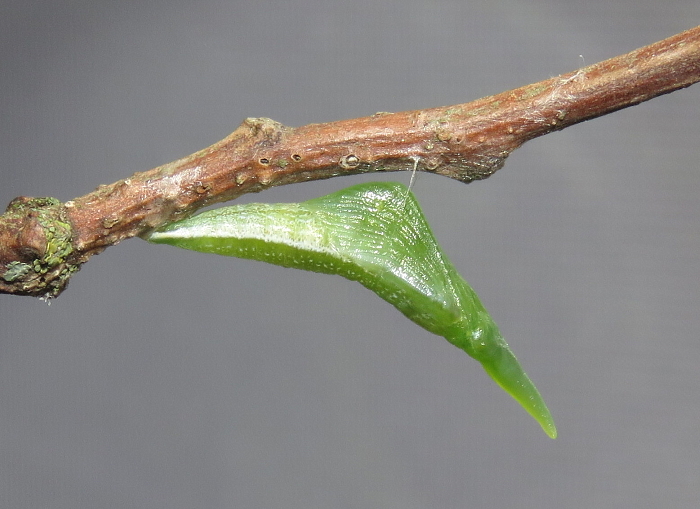Hi Pauline. I had the same experience with orange tips last year. One by one they fell to various things, and although I think one might have survived I never found where he pupated. According to LCoBIB (aka, the Gospel according to Pete), they wander far and wide looking for the right place. The problem in gardens is that where they think is perfect may be just where a gardener chooses to do some 'tidying up' later in the year or in the spring. The good news is that a female orange tip might lay some 200 eggs or more, of which only two on average - one male and one female - need to survive to reproductive adulthood to maintain the population. The remaining 198+ are for the birds and spiders and all the other creatures that need to feed.

Hi Wurzel. Yes - big cage!

To be precise, 60cm x 60 cm x 90 cm, and £32 on e-bay. I'd rather have bought something less plasticky and better quality, but it was a bit of a last-minute decision and I needed it fast!
Assuming Śvetaketu pupates, I'll be asking advice on what to do with him until next April! Jack, I think, has a lot of experience (and success) with orange tips and fridges, so that is an option. But how and when and what to do if he pupates on the netting instead of a plant I am keen to learn.
Pauline's diary reminded me I watched female green hairstreaks apparently searching for somewhere to lay the other day too. They were crawling over bramble flowers. I couldn't find any eggs but will return when the sun comes back and perhaps spend a little more time there. I don't know if she is feeding or testing the flower in this picture:

This is a different one, who flew off before I could get the shot. You can see her abdomen is chock full of eggs:

On the other hand, I think this one is a male, from a brief side view I had of the abdomen, and he is behaving in the same way:

(He does have a proboscis and was also probing the bramble flower with it - it is just bizarrely invisible in this picture).
Guy




































I uploaded a photo to the RES insect ID page and received a swift reply saying it was a thrips nymph - in other words, a thunderbug to be - and no threat to the pupa.